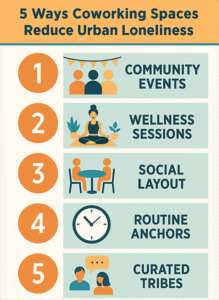In this blog post, we explore the EY Business Model to explain and understand how the Business Model of EY is structured using the Business Model Canvas (BMC).
Ernst & Young, popularly known as EY, is one of the largest professional services firms in the world, offering a wide range of services such as audit, tax, consulting, and advisory services. Headquartered in London, United Kingdom, EY is considered one of the “Big Four” accounting firms, alongside KPMG, Deloitte, and PwC. The company’s global presence, with offices in over 150 countries, is a testament to its strong growth and commitment to quality services. In this blog post, we will analyze the business model of EY using Alexander Osterwalder’s Business Model Canvas, explore the company’s history and founders, and discuss the reasons behind its inception.
- The Founders and the Story behind EY
EY’s story began in the late 19th century when two individual accounting firms, Ernst & Ernst and Arthur Young & Company, were founded in the United States. Ernst & Ernst was founded in 1903 by Alwin C. Ernst, an American accountant who aimed to provide high-quality accounting services. Arthur Young, a Scottish immigrant, and his brother Stanley established Arthur Young & Company in 1906. Both firms shared a common vision of providing top-notch services to clients and maintaining ethical standards in the accounting profession.
The two firms experienced significant growth during the first half of the 20th century, expanding their services and reach both domestically and internationally. In 1989, the two firms merged to form Ernst & Young, a powerhouse in the accounting and consulting world. Since then, EY has continued to grow, both organically and through acquisitions, and has evolved its services to meet the changing needs of its clients and the global marketplace.
- The Business Model Canvas: A Framework for Understanding EY’s Business Model
Alexander Osterwalder’s Business Model Canvas is a strategic management tool that allows organizations to visually represent and analyze their business model. The canvas comprises nine building blocks: customer segments, value propositions, channels, customer relationships, revenue streams, key resources, key activities, key partnerships, and cost structure. In this section, we will explore each of these components in the context of EY’s business model.
2.1 Customer Segments
EY serves a diverse range of clients, including large multinational corporations, small and medium-sized enterprises, government agencies, and non-profit organizations. The company’s primary customer segments are:
- Large multinational corporations: EY provides audit, tax, consulting, and advisory services to some of the world’s largest companies across various industries, such as finance, technology, healthcare, and consumer products.
- Small and medium-sized enterprises (SMEs): EY offers tailored solutions to SMEs, helping them navigate complex regulatory environments and manage growth.
- Government agencies: EY assists governments in developing and implementing policies, evaluating programs, and providing financial and operational advice.
- Non-profit organizations: EY supports non-profit organizations in areas such as governance, risk management, and financial reporting.
2.2 Value Propositions
EY’s value propositions are centered around its commitment to delivering high-quality services, deep industry knowledge, and global presence. The company offers:
- Trusted and reliable services: EY is known for its rigorous auditing and assurance services, ensuring clients comply with financial reporting standards and maintain accurate records.
- Deep industry knowledge: EY’s professionals have extensive experience and expertise in various industries, allowing them to provide tailored solutions and insights to clients.
- Global presence: EY’s vast network of offices in over 150 countries allows the company to serve clients worldwide and navigate complex regulatory environments.
- Innovative solutions: EY invests heavily in research and development, leveraging cutting-edge technologies and methodologies to provide clients with innovative solutions that address their most pressing business challenges.
- Comprehensive services: EY offers a wide range of services, including audit, tax, consulting, and advisory, enabling clients to access all necessary expertise under one roof.
2.3 Channels
EY employs various channels to reach its clients and deliver its services:
- Direct sales force: EY has a dedicated sales team responsible for establishing and maintaining relationships with clients, identifying their needs, and proposing relevant services.
- Online platforms: EY leverages its website and digital marketing efforts to reach potential clients and showcase its service offerings.
- Events and conferences: EY participates in industry events and conferences to engage with potential clients, share insights, and demonstrate its thought leadership.
- Partnerships: EY collaborates with other organizations, such as technology vendors and industry associations, to expand its reach and enhance its service offerings.
2.4 Customer Relationships
EY places great emphasis on building and maintaining strong relationships with its clients. The company fosters these relationships through:
- Personalized service: EY assigns dedicated account managers and engagement teams to each client, ensuring that clients receive tailored services and consistent points of contact.
- Ongoing support: EY provides clients with ongoing support, addressing their concerns and helping them adapt to changing business and regulatory environments.
- Training and workshops: EY offers training programs and workshops to help clients stay informed and develop the necessary skills to navigate complex business challenges.
- Thought leadership: EY regularly publishes reports, articles, and whitepapers on various industry topics, demonstrating its expertise and providing clients with valuable insights.
2.5 Revenue Streams
EY generates revenue primarily through fees charged for its services. These fees may be fixed, hourly, or performance-based, depending on the nature of the engagement. EY’s primary revenue streams include:
- Audit and assurance: EY provides independent audits and assurance services, verifying the accuracy of financial statements and compliance with accounting standards.
- Tax: EY offers tax planning, compliance, and advisory services, helping clients navigate complex tax regulations and minimize their tax liabilities.
- Consulting: EY assists clients with various aspects of their business, such as strategy, operations, technology, and risk management.
- Advisory: EY provides specialized advisory services, such as mergers and acquisitions, capital markets, and regulatory compliance.
2.6 Key Resources
EY’s key resources include its skilled workforce, global network of offices, intellectual property, and technology infrastructure. These resources enable the company to deliver high-quality services and maintain its competitive advantage:
- Skilled workforce: EY’s professionals possess deep industry knowledge and expertise, allowing the company to provide tailored solutions and insights to its clients.
- Global network: EY’s presence in over 150 countries enables the company to serve clients worldwide and navigate complex regulatory environments.
- Intellectual property: EY invests heavily in research and development, creating proprietary methodologies, tools, and frameworks to enhance its service offerings.
- Technology infrastructure: EY leverages advanced technologies, such as artificial intelligence, data analytics, and blockchain, to deliver innovative solutions and improve operational efficiency.
2.7 Key Activities
EY’s key activities revolve around delivering its services, managing client relationships, and developing new solutions. These activities include:
- Service delivery: EY’s professionals conduct audits, provide tax advice, consult on various business matters, and offer specialized advisory services.
- Client relationship management: EY’s account managers and engagement teams work closely with clients, ensuring that their needs are met and that services are delivered effectively.
- Research and development: EY invests in developing new methodologies, tools, and technologies to enhance its service offerings and maintain its competitive edge.
2.8 Key Partnerships
EY forms strategic partnerships with various organizations to expand its reach, enhance its service offerings, and maintain its competitive advantage. Key partnerships include:
- Technology vendors: EY collaborates with leading technology companies, such as Microsoft, IBM, and SAP, to integrate cutting-edge solutions into its service offerings and deliver innovative solutions to clients.
- Industry associations: EY partners with industry associations and regulatory bodies to stay informed about the latest industry trends, standards, and regulations, ensuring that its services remain relevant and compliant.
- Educational institutions: EY works with universities and business schools to develop talent, conduct joint research, and contribute to the development of the accounting and consulting professions.
- Non-profit organizations: EY collaborates with non-profit organizations, such as the World Economic Forum and the International Integrated Reporting Council, to promote sustainable business practices and contribute to the broader social good.
2.9 Cost Structure
EY’s cost structure primarily consists of the following expenses:
- Employee compensation: EY incurs substantial costs related to salaries, bonuses, and benefits for its workforce, which includes over 300,000 employees worldwide.
- Real estate and office expenses: EY operates a global network of offices, resulting in significant costs related to rent, utilities, and office maintenance.
- Technology infrastructure: EY invests in advanced technologies and IT systems to support its service delivery and operational efficiency, incurring costs for hardware, software, and IT support.
- Research and development: EY’s commitment to innovation and continuous improvement requires ongoing investment in research and development activities.
- Marketing and promotion: EY engages in various marketing efforts, such as digital advertising, event sponsorship, and thought leadership initiatives, to promote its brand and service offerings.
EY has established itself as a global leader in the professional services industry, providing a wide range of audit, tax, consulting, and advisory services to clients across various sectors. The company’s success can be attributed to its commitment to delivering high-quality services, deep industry knowledge, and extensive global presence.
By examining EY’s business model through the lens of Alexander Osterwalder’s Business Model Canvas, we have gained insights into the company’s customer segments, value propositions, channels, customer relationships, revenue streams, key resources, key activities, key partnerships, and cost structure. This analysis has demonstrated EY’s ability to adapt and evolve in response to the changing needs of its clients and the global marketplace, ensuring its continued growth and success.
As the business environment continues to evolve, EY will need to maintain its focus on innovation, invest in its workforce, and foster strategic partnerships to stay ahead of the competition and continue delivering value to its clients.
Did you know? Corporate teams like to use our coworking space in Bangalore.
Learn more about our coworking space on our YouTube channel Work Theater Studios where we talk about a variety of topics including personal finance, entrepreneurship, business and life.
Did you know? We also have a private theatre in Bangalore.




